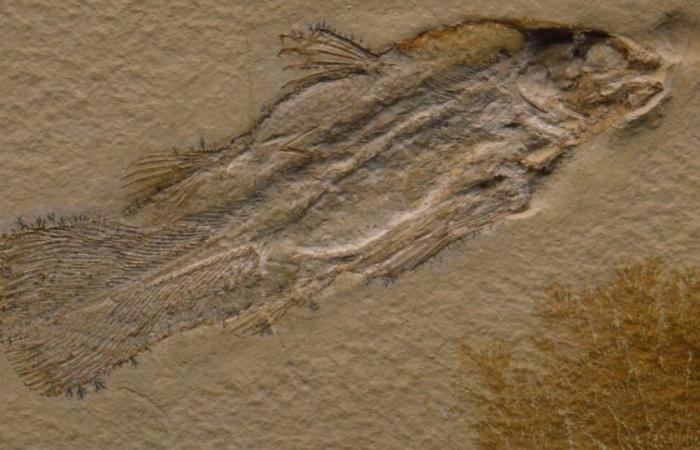Fossils, these ancient remains of creatures that populated our planet millions, even billions of years ago, continue to fascinate scientists and enthusiasts around the world. Let’s dive into the fascinating world of fossils and discover what they have to tell us about our distant past.
It usually takes millions of years to make a fossil. It takes organic remains are preserved from any decomposition (buried under sediments, for example). Over time, minerals penetrate these remains and replace the organic matter: they become fossils. The rigid parts of an animal or plant are those that are best preserved.
Archaeopteryx, a feathered dinosaur
Discovered in Germany in 1861 and 150 million years old, Archaeopteryx has characteristics intermediate between dinosaurs and birds. The size of a crow, it has a long tail, small teeth and wings. In addition, it has a fused clavicular bone, specific to birds and dinosaurs. Long seen as a transient species between these two groups, its place in evolution has been questioned again since the discovery of other fossil species similar.
Amber, a fossil resin
Amber is a resin, produced by trees or plants, which has fossilized over time and most often contains very small remains of plants (leaves, pollen, twigs, etc.) or invertebrates. These are logically only tiny specimens which may have been trapped in a rapid flow of resin drops. With rare exceptions: a few lizards have been found in amber.
>> Here in pictures, a fascinating dive into the world of fossils
Lagerstätten, sedimentary deposits rich in fossils
We find there the best preserved fossils. These remarkable sites – around fifty on the planet – benefited from rapid burial of organic remains, the presence of very fine sediments and an absence of oxygen: certain fossils from deposits have thus preserved a trace of their soft parts. They thus offer valuable information on the anatomy and lifestyle of ancient organisms and on the evolution of complex structures such as dinosaur feathers.
Not all fossils are dinosaurs
THE dinosaurs lived on Earth approximately 66 to 252 million years ago. Fossils of other animals (fish, insects, mammals, etc.) and plants have also been unearthed during this same period. In addition, many fossils bear witness to different, older periods (such as the Cambrian500 million years ago) or more recent.
The desert of Wadi Al-Hitan, the valley of the whales
This arid valley in Egypt, once a sea, contains 1,500 fossilized skeletons, including extinct species of whales that lived 33.9 million years ago, such as the Basilosaurusa carnivore up to 15 m long and the Dorudonone of its preys, three times smaller. Some of the oldest fossils even show the presence of remains of lower limbs : these whales therefore evolved from land to become marine mammals.
You may also be interested in:
⋙ Discover the oldest fossils on our planet
⋙ Kermit the Frog now has a fossil named after him!
⋙ An incredible fossil zoo discovered in the south of France by amateurs






